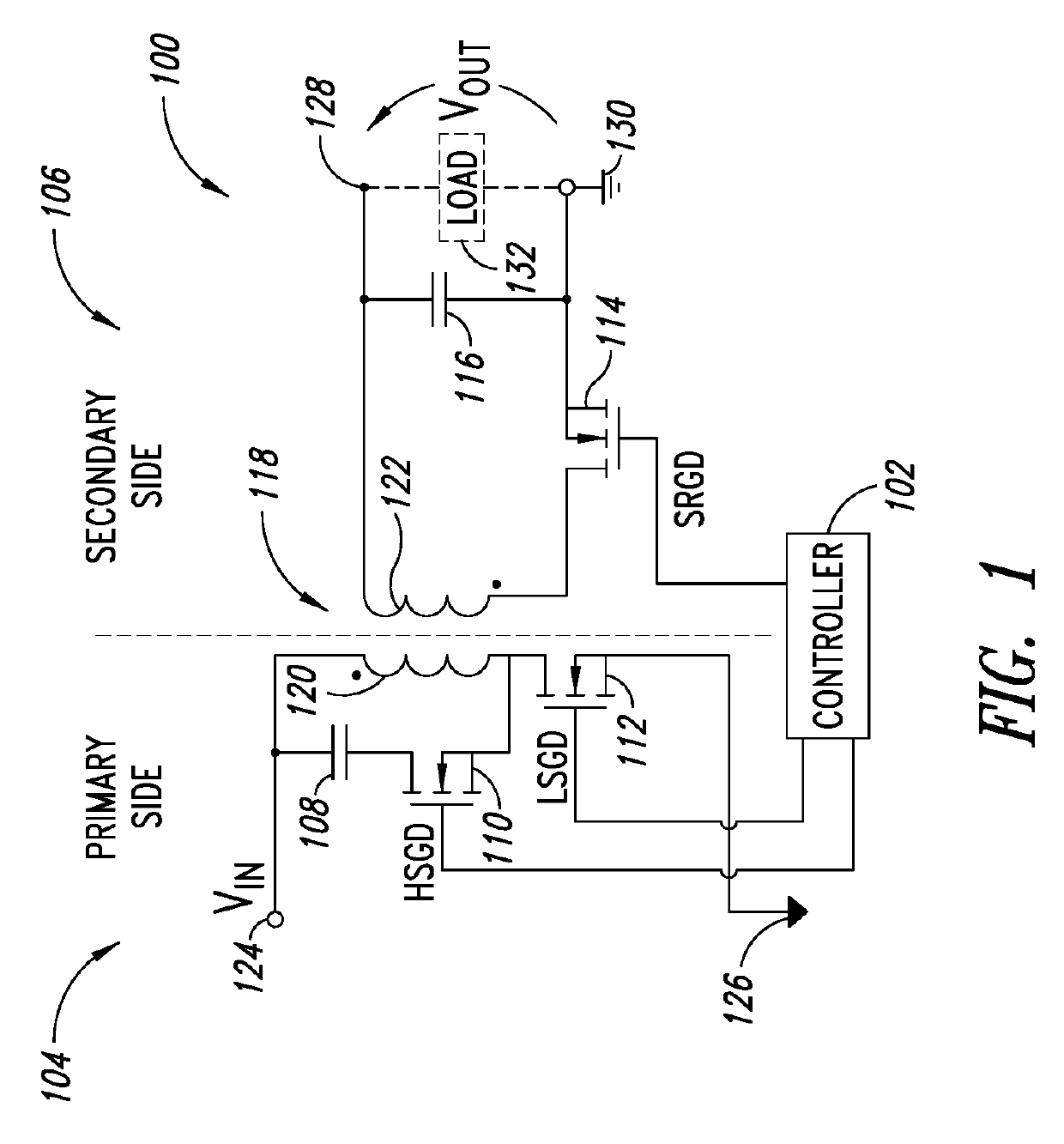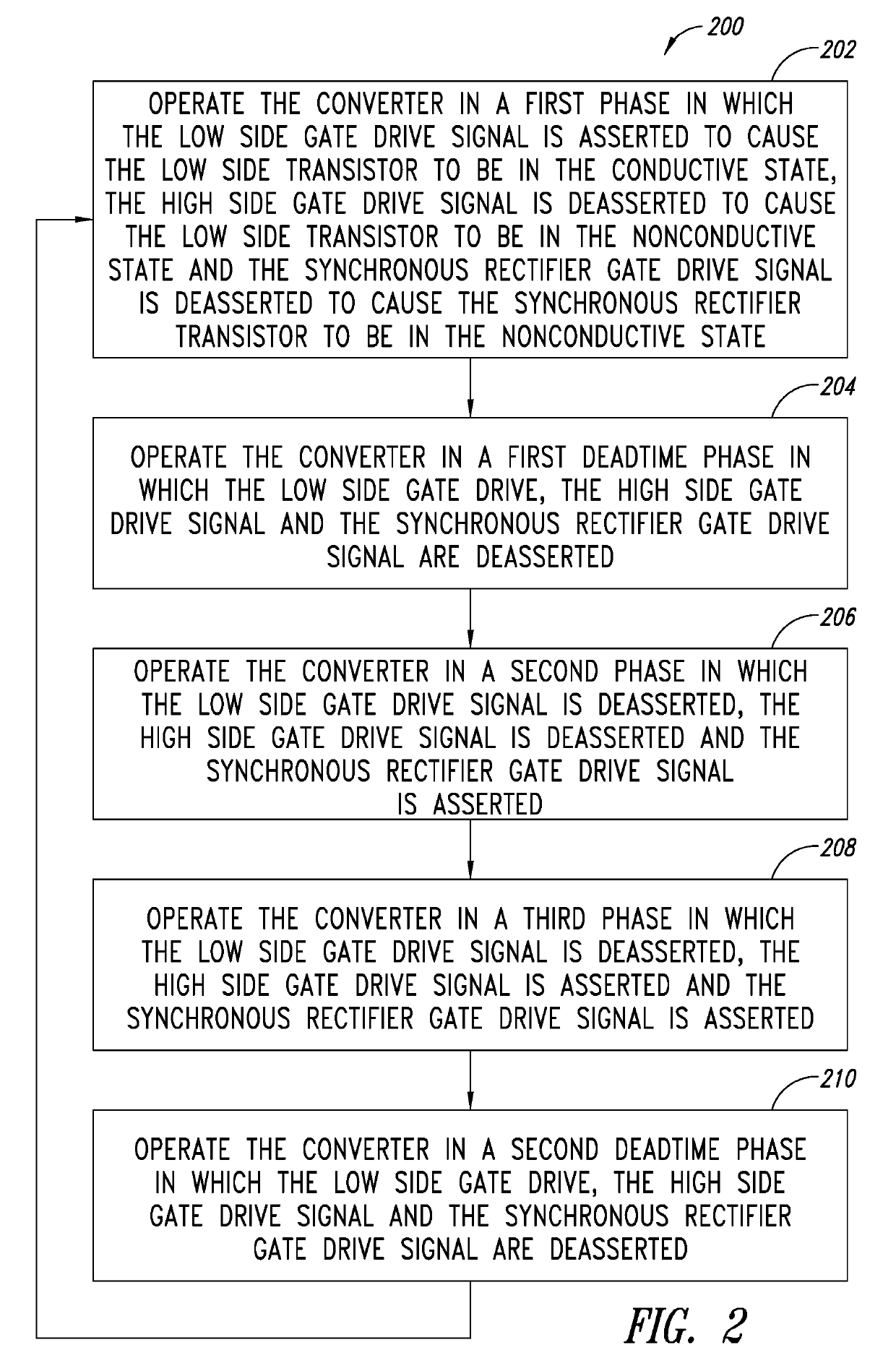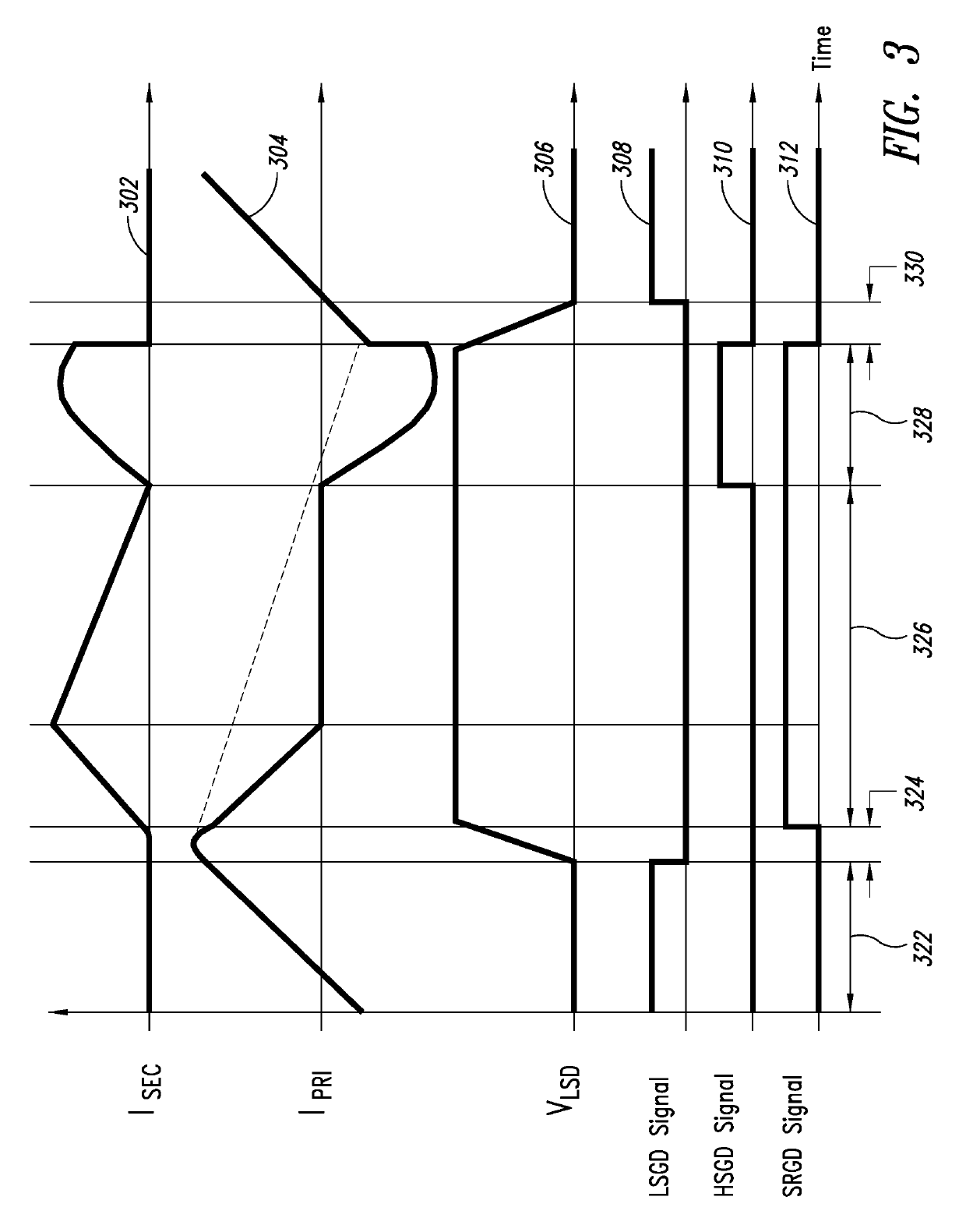Active clamp flyback converter control with reduced current
a technology of active clamp and converter, applied in the direction of efficient power electronics conversion, electric variable regulation, instruments, etc., can solve the problem of degrading the power efficiency of the converter
- Summary
- Abstract
- Description
- Claims
- Application Information
AI Technical Summary
Benefits of technology
Problems solved by technology
Method used
Image
Examples
Embodiment Construction
[0022]FIG. 1 shows a circuit diagram of an active clamp flyback converter 100 coupled to a controller 102. The converter 100 has a primary side 104 and a secondary side 106, which may be in galvanically isolated power domains. The converter 100 includes, in the primary side 104, a clamp capacitance 108, a high side transistor 110 and a low side transistor 112. The converter 100 includes, in the secondary side 106, a synchronous rectifier transistor 114 and an output capacitance 116. The converter 100 includes a transformer 118 having a primary winding 120 disposed in the primary side 104 and a secondary winding 122 disposed in the secondary side 106. The controller 102 is distributed over the primary and secondary sides 104, 106 and may have internal galvanic isolation between the primary and secondary sides 104, 106. However, in various embodiments the controller 102 may be in the primary side 104 or the secondary side 106.
[0023]In FIG. 1, the high side transistor 110 is represente...
PUM
 Login to View More
Login to View More Abstract
Description
Claims
Application Information
 Login to View More
Login to View More - R&D
- Intellectual Property
- Life Sciences
- Materials
- Tech Scout
- Unparalleled Data Quality
- Higher Quality Content
- 60% Fewer Hallucinations
Browse by: Latest US Patents, China's latest patents, Technical Efficacy Thesaurus, Application Domain, Technology Topic, Popular Technical Reports.
© 2025 PatSnap. All rights reserved.Legal|Privacy policy|Modern Slavery Act Transparency Statement|Sitemap|About US| Contact US: help@patsnap.com



